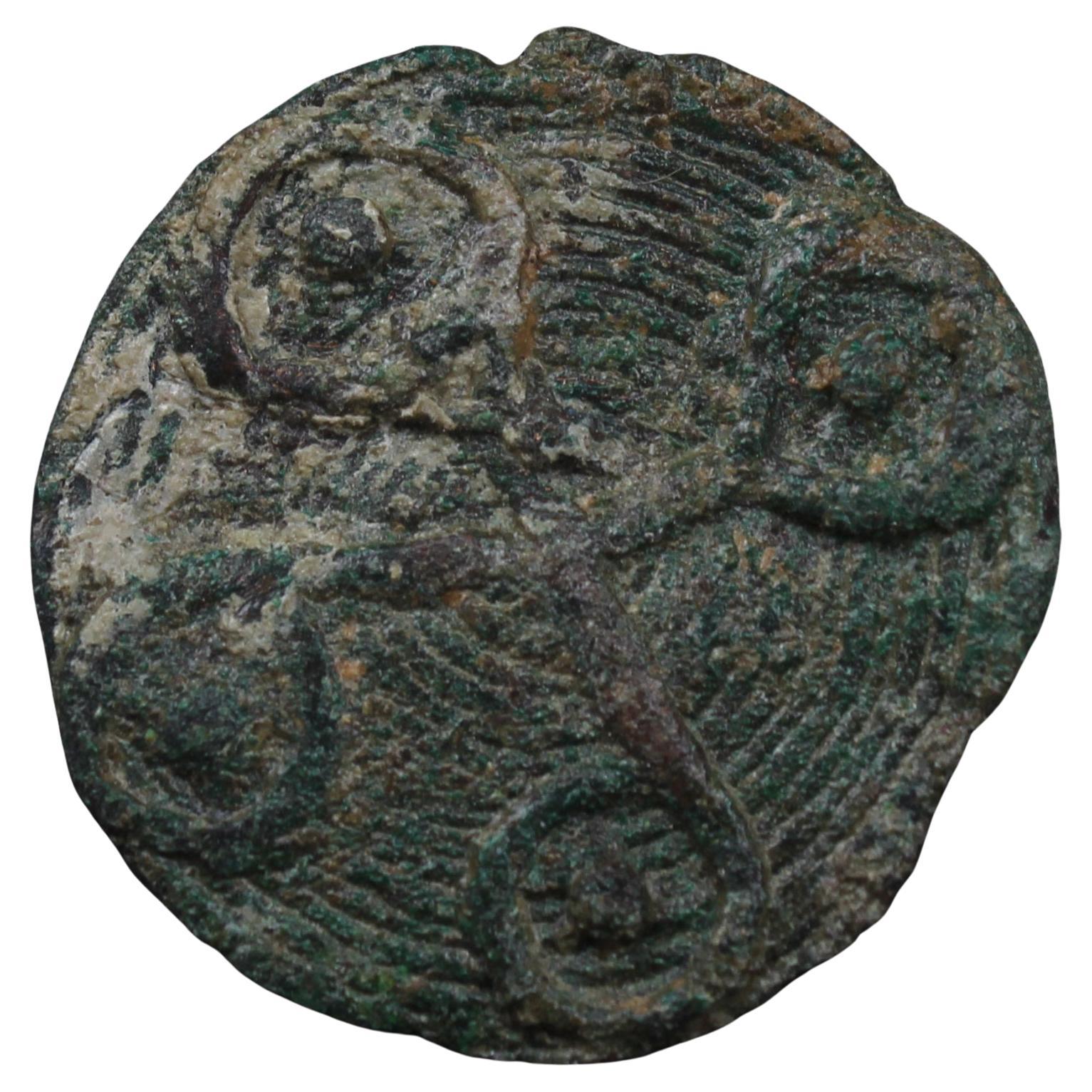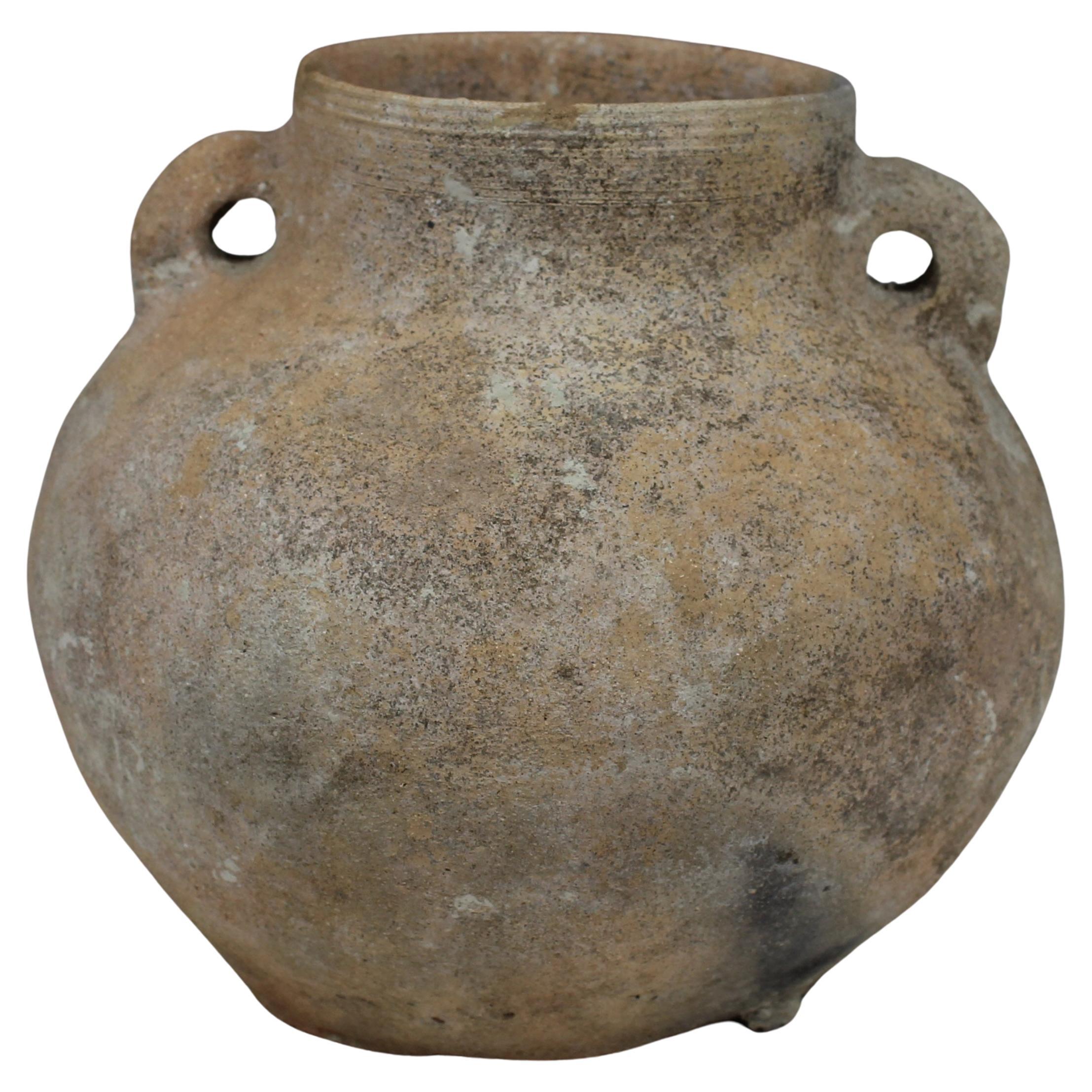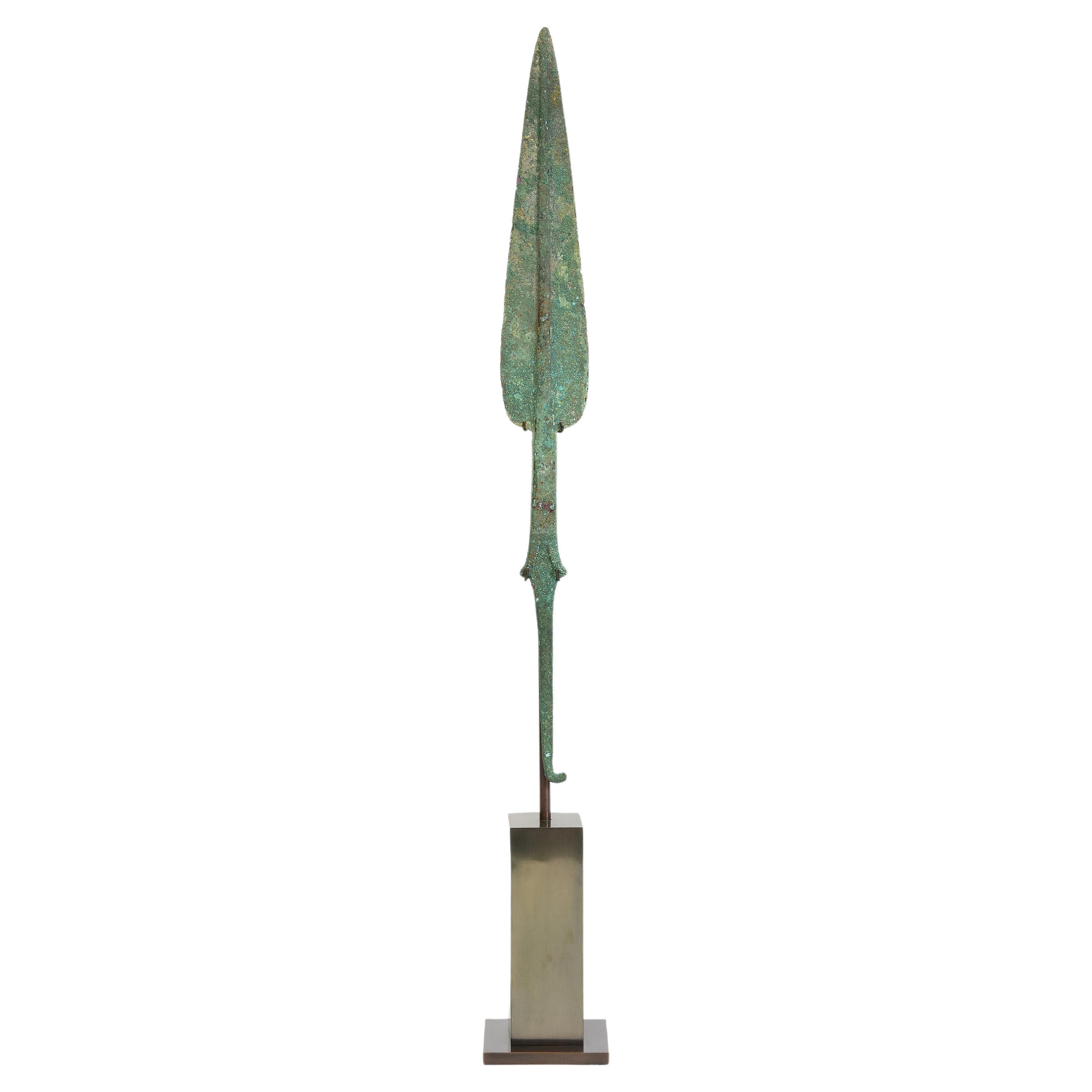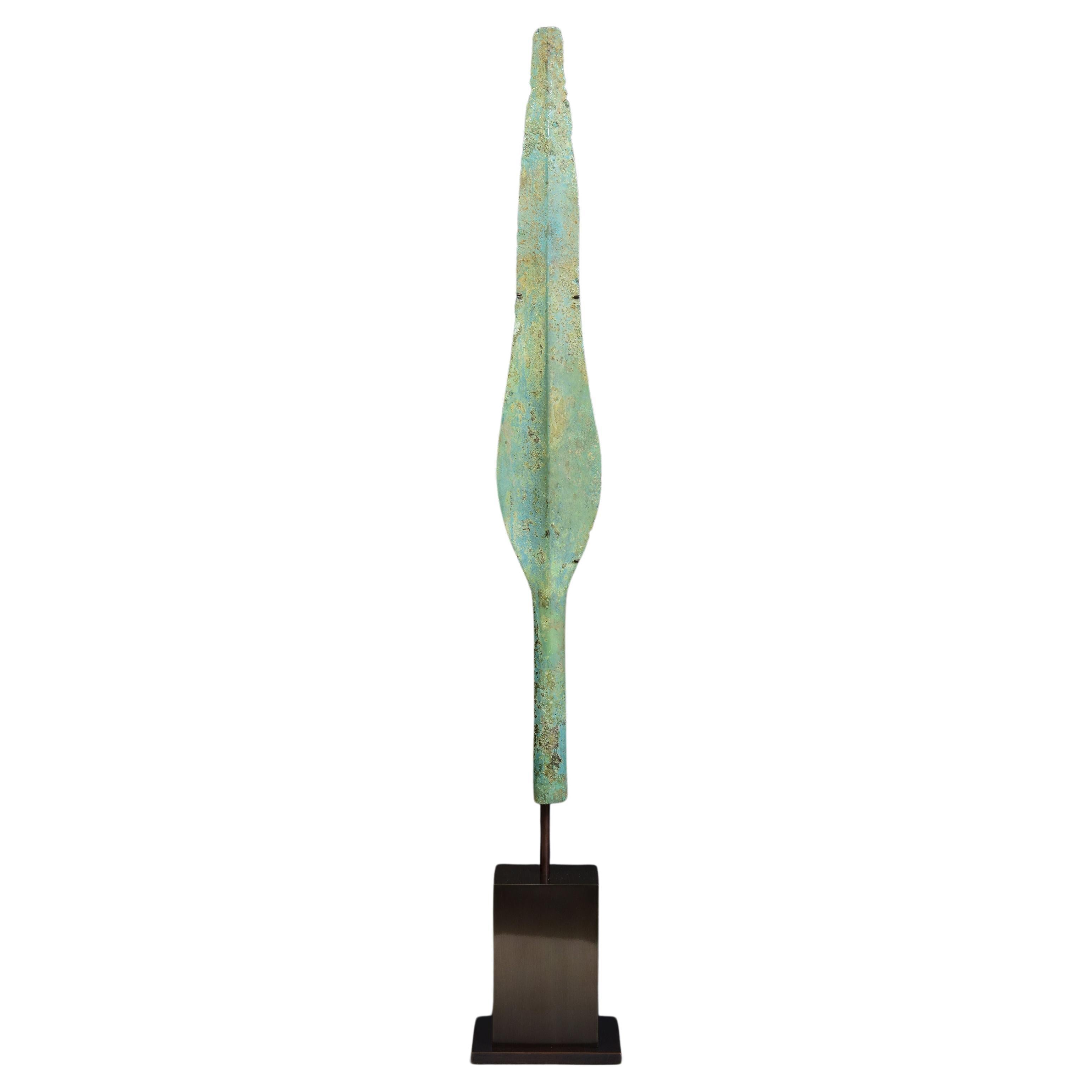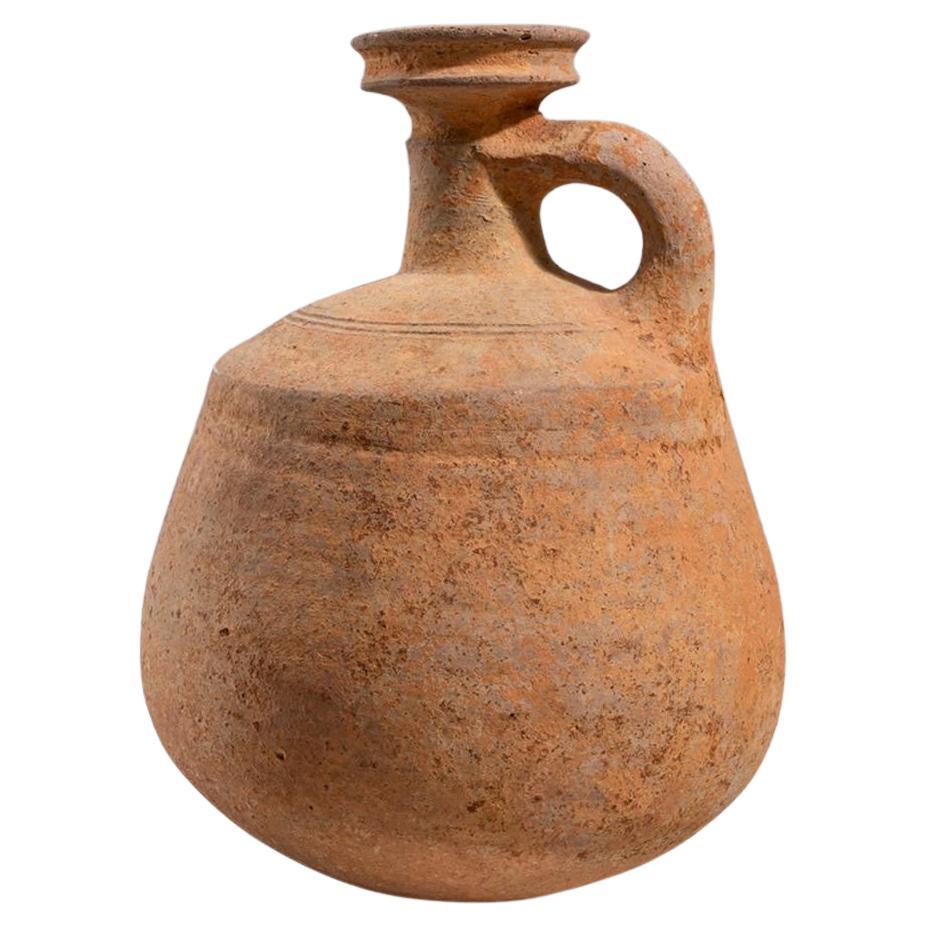Want more images or videos?
Request additional images or videos from the seller
1 of 6
Iron Age Amlash ring
About the Item
ITEM: Ring
MATERIAL: Bronze
CULTURE: Iron Age, Amlash
PERIOD: 1st millenium B.C
DIMENSIONS: 21 mm x 28 mm diameter
CONDITION: Good condition
PROVENANCE: Ex English private collection, acquired from London Gallery (1970s – 2000s)
Comes with Certificate of Authenticity and Export license (If you live outside the European Union, We will have to apply for an export licence for your country and shipping will take 3 to 5 weeks.)
The Amlash culture thrived in the coastal region of the Caspian Sea, in what is now Iran, during the first millennium BCE and particularly flourished between the 9th and 6th centuries BCE. While relatively little is known about this culture compared to some of the more prominent ancient civilizations, archaeologists have unearthed significant archaeological remnants in the Amlash region that shed light on its history and cultural characteristics.
The Amlash culture was characterized by its decorative pottery, which often featured intricate geometric designs and zoomorphic motifs, such as birds and animals. Bronze objects, tools, and jewelry have also been discovered, reflecting a notable level of craftsmanship. The economy of the Amlash culture was based on agriculture, fishing, and trade. Its coastal location allowed for interaction with nearby civilizations, such as the Assyrians and the Medes. Although the Amlash culture eventually merged with other cultures over time, its archaeological legacy remains an important testament to cultural diversity in the ancient Caspian Sea region.
- Dimensions:Height: 0.83 in (2.1 cm)Width: 1.11 in (2.8 cm)Depth: 1.11 in (2.8 cm)
- Style:Prehistoric (Of the Period)
- Materials and Techniques:
- Place of Origin:
- Period:
- Date of Manufacture:1st millenium B.C
- Condition:
- Seller Location:EL CAMPELLO, ES
- Reference Number:1stDibs: LU7382236637232
About the Seller
5.0
Vetted Seller
These experienced sellers undergo a comprehensive evaluation by our team of in-house experts.
Established in 2011
1stDibs seller since 2022
10 sales on 1stDibs
- ShippingRetrieving quote...Ships From: El Campello, Spain
- Return PolicyA return for this item may be initiated within 60 days of delivery.
More From This SellerView All
- Iron Age Amlash ringLocated in EL CAMPELLO, ESITEM: Ring MATERIAL: Bronze CULTURE: Iron Age, Amlash PERIOD: 1st millenium B.C DIMENSIONS: 23 mm x 32 mm diameter CONDITION: Good condition PROVENANCE: Ex English private collection...Category
Antique 15th Century and Earlier Asian Prehistoric Antiquities
MaterialsBronze
- Iron Age Amlash ringLocated in EL CAMPELLO, ESITEM: Ring MATERIAL: Bronze CULTURE: Iron Age, Amlash PERIOD: 1st millenium B.C DIMENSIONS: 20 mm x 29 mm diameter CONDITION: Good condition PROVENANCE: Ex English private collection...Category
Antique 15th Century and Earlier Asian Prehistoric Antiquities
MaterialsBronze
- Bronze Age amphoriskosLocated in EL CAMPELLO, ESITEM: Amphoriskos MATERIAL: Pottery CULTURE: Bronze Age PERIOD: 2400 – 2000 B.C DIMENSIONS: 140 mm x 145 mm CONDITION: Good condition PROVENANCE: Ex Emeritus collection (USA), collec...Category
Antique 15th Century and Earlier Israeli Prehistoric Antiquities
MaterialsPottery
- Roman military cheek piece of a helmet fragment with Jupiter’s eagleLocated in EL CAMPELLO, ESITEM: Military cheek piece of a helmet fragment with Jupiter’s eagle MATERIAL: Bronze CULTURE: Roman PERIOD: 3rd Century A.D DIMENSIONS: 180 mm x 123 mm CONDITION: Good condition PROVENANCE: Ex Alison Barker private collection, a retired London barrister, acquired between 1960s – 1990s BIBLIOGRAPHY: RUCINSKI, E., Get the picture?: Iconography of cheek pieces on Roman Imperial cavalry helmets...Category
Antique 15th Century and Earlier Italian Classical Roman Antiquities
MaterialsBronze
- Greek aryballos depicting a horse headLocated in EL CAMPELLO, ESITEM: Aryballos depicting a horse head MATERIAL: Pottery CULTURE: Greek, Corinthian PERIOD: 7th Century B.C DIMENSIONS: 62 mm x 55 mm diameter CONDITION: Good condition PROVENANCE: E...Category
Antique 15th Century and Earlier Greek Classical Greek Antiquities
MaterialsPottery
- Chinese statuette of a Fat LadyLocated in EL CAMPELLO, ESITEM: Statuette of a Fat Lady MATERIAL: Pottery CULTURE: Chinese, Tang Dynasty PERIOD: 618 – 907 A.D DIMENSIONS: 645 mm x 260 mm x 180 mm CONDITION: Good condition. Includes Thermoluminescence test by Laboratory Kotalla (Reference 04B101123). Includes Certificate of Authenticity from Dutch gallery PROVENANCE: Ex Belgian private collection, acquired from Dutch art gallery Comes with Certificate of Authenticity and Export Licence. If you are from outside the European Union, we will have to apply for the export licence again for your country, this takes 4 to 6 weeks. Due to the fragility and size of this piece, it can only be shipped within the European Union, United Kingdom and neighbouring countries that can be transported by road by private courier (door to door). This beautifully-finished ceramic attendant was made during what many consider to be China’s Golden Age, the Tang Dynasty. It was at this point that China’s outstanding technological and aesthetic achievements opened to external influences, resulting in the introduction of numerous new forms of self-expression, coupled with internal innovation and considerable social freedom. The Tang dynasty also saw the birth of the printed novel, significant musical and theatrical heritage and many of China’s best- known painters and artists. The Tang Dynasty was created on the 18th of June, 618 AD, when the Li family seized power from the last crumbling remnants of the preceding Sui Dynasty. This political and regal regime was long-lived, and lasted for almost 300 years. The imperial aspirations of the preceding periods and early Tang leaders led to unprecedented wealth, resulting in considerable socioeconomic stability, the development of trade networks and vast urbanisation for China’s exploding population (estimated at around 50 million people in the 8th century AD). The Tang rulers took cues from earlier periods, maintaining many of their administrative structures and systems intact. Even when dynastic and governmental institutions withdrew from management of the empire towards the end of the period – their authority undermined by localised rebellions and regional governors known as jiedushi –the systems were so well- established that they continued to operate regardless. The artworks created during this era are among China’s greatest cultural achievements. It was the greatest age for Chinese poetry and painting, and sculpture also developed (although there was a notable decline in Buddhist sculptures following repression of the faith by pro-Taoism administrations later in the regime). It is disarming to note that the eventual decline of imperial power, followed by the official end of the dynasty on the 4th of June 907, hardly affected the great artistic turnover. During the Tang Dynasty, restrictions were placed on the number of objects that could be included in tombs, an amount determined by an individual’s social rank. In spite of the limitations, a striking variety of tomb furnishings – known as mingqi – have been excavated. Entire retinues of ceramic figures – representing warriors, animals, entertainers, musicians, guardians and every other necessary category of assistant – were buried with the dead in order to provide for the afterlife. Warriors (lokapala) were put in place to defend the dead, while horses/ camels were provided for transport, and officials to run his estate in the hereafter. Of all the various types of mingqi, however, there are none more elegant or charming than the sculptures of sophisticated female courtiers, known – rather unfairly – as “fat ladies...Category
Antique 15th Century and Earlier Chinese Tang Antiquities
MaterialsPottery
You May Also Like
- Ancient Antique Luristan Bronze Spear Early Iron Age WeaponLocated in Sampantawong, THAncient Luristan bronze spear with excellent green patina. Luristan bronze comes from the province of Lorestan, a region of nowadays Western Iran in the Zagros Mountains. With its r...Category
Antique 15th Century and Earlier Persian Antiquities
MaterialsBronze
- Ancient Antique Luristan Bronze Spear Early Iron Age WeaponLocated in Sampantawong, THAncient Luristan bronze spear with excellent green patina. Luristan bronze comes from the province of Lorestan, a region of nowadays Western I...Category
Antique 15th Century and Earlier Persian Antiquities
MaterialsBronze
- Pottery Jug from Ancient Holy Land Iron Age c.1000 BC.Located in Bonita Springs, FLAncient Holy Land Iron Age Pottery Jug c.1000 BC. Fine large pottery footed jug with loop type handle, etched lines at shoulder. Iron Age from the time of King David. Provenance: E...Category
Antique 15th Century and Earlier Israeli Antiquities
MaterialsPottery
- Ancient Antique Luristan Bronze Sword / Knife / Dagger / Early Iron Age WeaponLocated in Sampantawong, THAncient Luristan bronze sword with green patina. Luristan bronze comes from the province of Lorestan, a region of nowadays Western Iran in the Zagros Mountains. With its rich and ...Category
Antique 15th Century and Earlier Persian Antiquities
MaterialsBronze
- Ancient Antique Luristan Bronze Sword / Knife / Dagger / Early Iron Age WeaponLocated in Sampantawong, THAncient Luristan bronze sword with nice patina. Luristan bronze comes from the province of Lorestan, a region of nowadays Western Iran in the ...Category
Antique 15th Century and Earlier Persian Antiquities
MaterialsBronze
- Ancient Antique Luristan Bronze Sword / Knife / Dagger / Early Iron Age WeaponLocated in Sampantawong, THAncient Luristan bronze sword with nice patina. Luristan bronze comes from the province of Lorestan, a region of nowadays Western Iran in the Zagros Mountains. With its rich and lon...Category
Antique 15th Century and Earlier Persian Antiquities
MaterialsBronze
